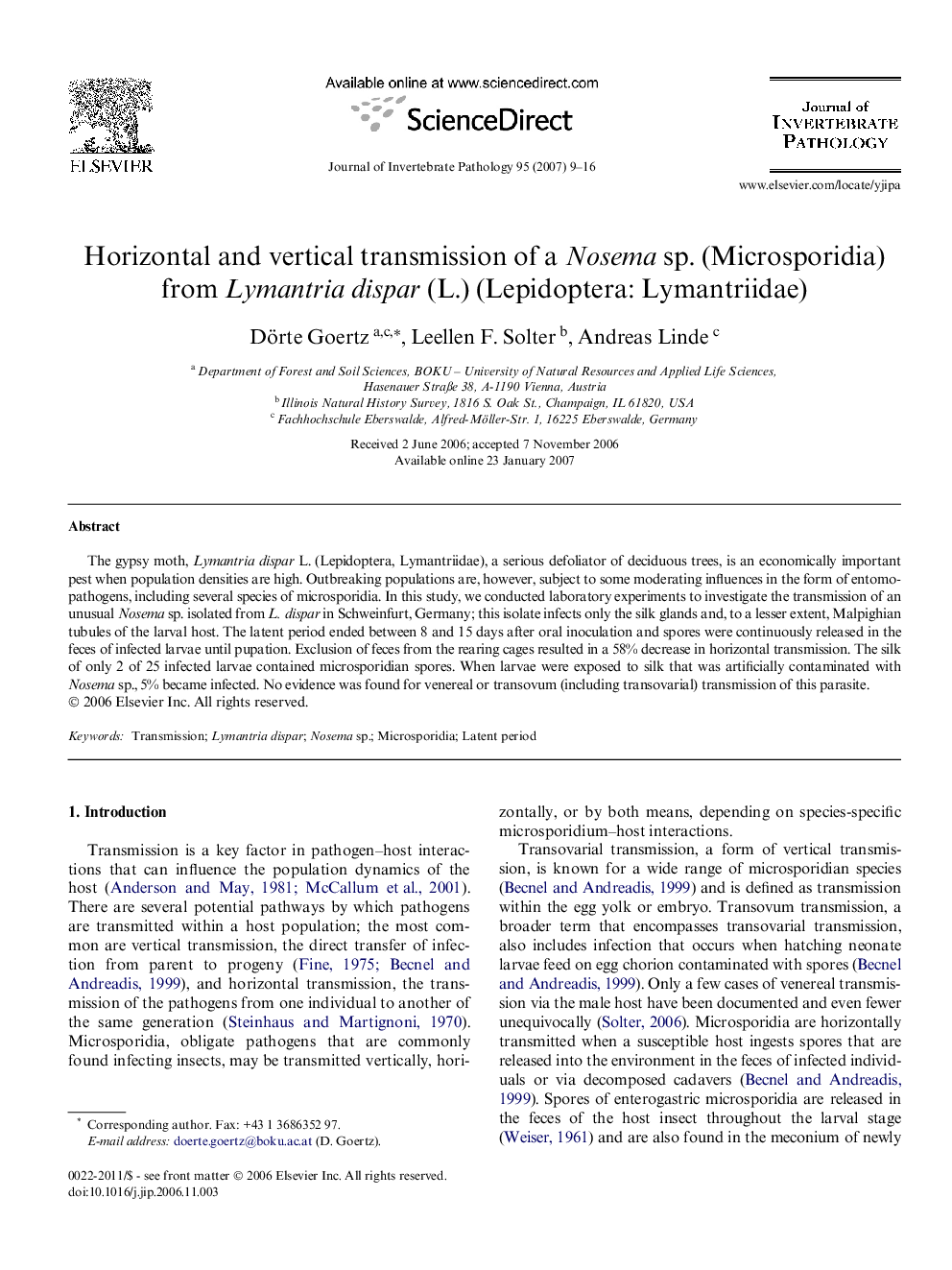| Article ID | Journal | Published Year | Pages | File Type |
|---|---|---|---|---|
| 4558649 | Journal of Invertebrate Pathology | 2007 | 8 Pages |
Abstract
The gypsy moth, Lymantria dispar L. (Lepidoptera, Lymantriidae), a serious defoliator of deciduous trees, is an economically important pest when population densities are high. Outbreaking populations are, however, subject to some moderating influences in the form of entomopathogens, including several species of microsporidia. In this study, we conducted laboratory experiments to investigate the transmission of an unusual Nosema sp. isolated from L. dispar in Schweinfurt, Germany; this isolate infects only the silk glands and, to a lesser extent, Malpighian tubules of the larval host. The latent period ended between 8 and 15 days after oral inoculation and spores were continuously released in the feces of infected larvae until pupation. Exclusion of feces from the rearing cages resulted in a 58% decrease in horizontal transmission. The silk of only 2 of 25 infected larvae contained microsporidian spores. When larvae were exposed to silk that was artificially contaminated with Nosema sp., 5% became infected. No evidence was found for venereal or transovum (including transovarial) transmission of this parasite.
Related Topics
Life Sciences
Agricultural and Biological Sciences
Ecology, Evolution, Behavior and Systematics
Authors
Dörte Goertz, Leellen F. Solter, Andreas Linde,
